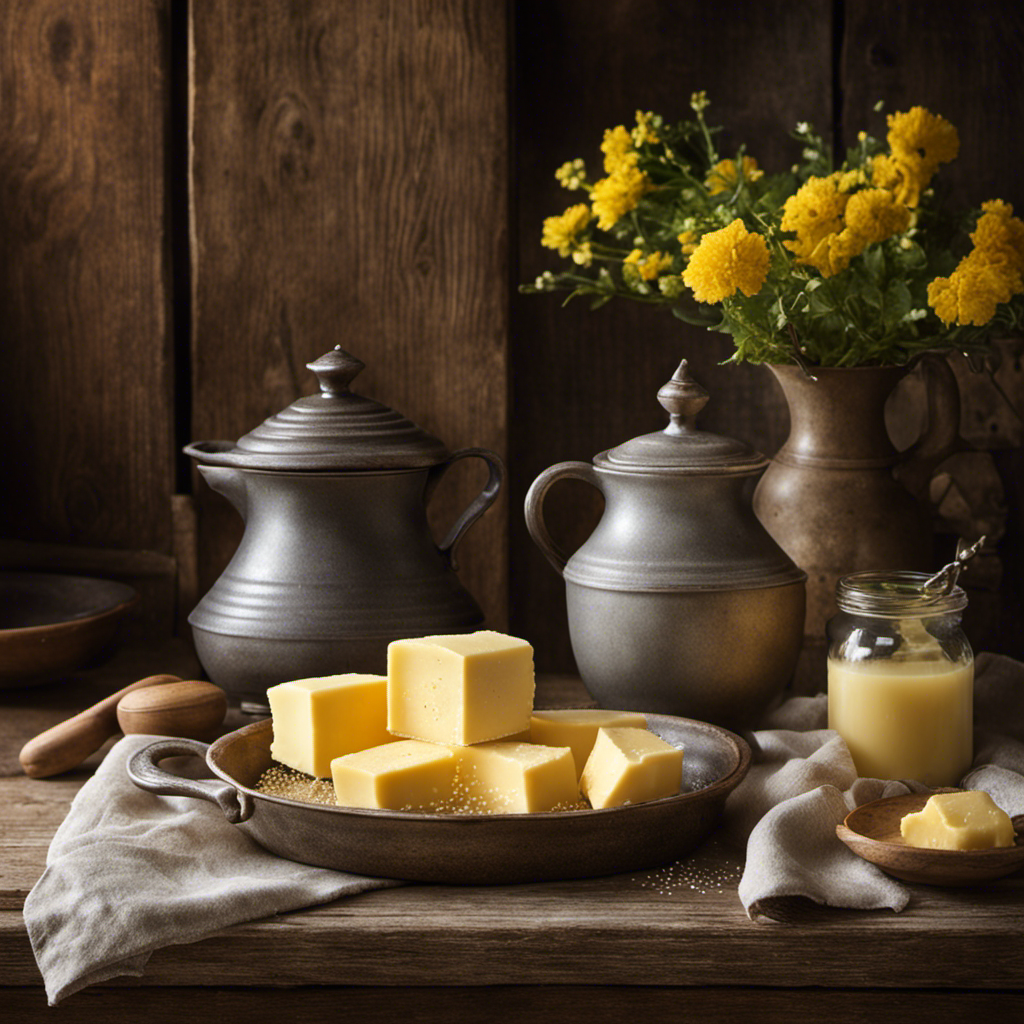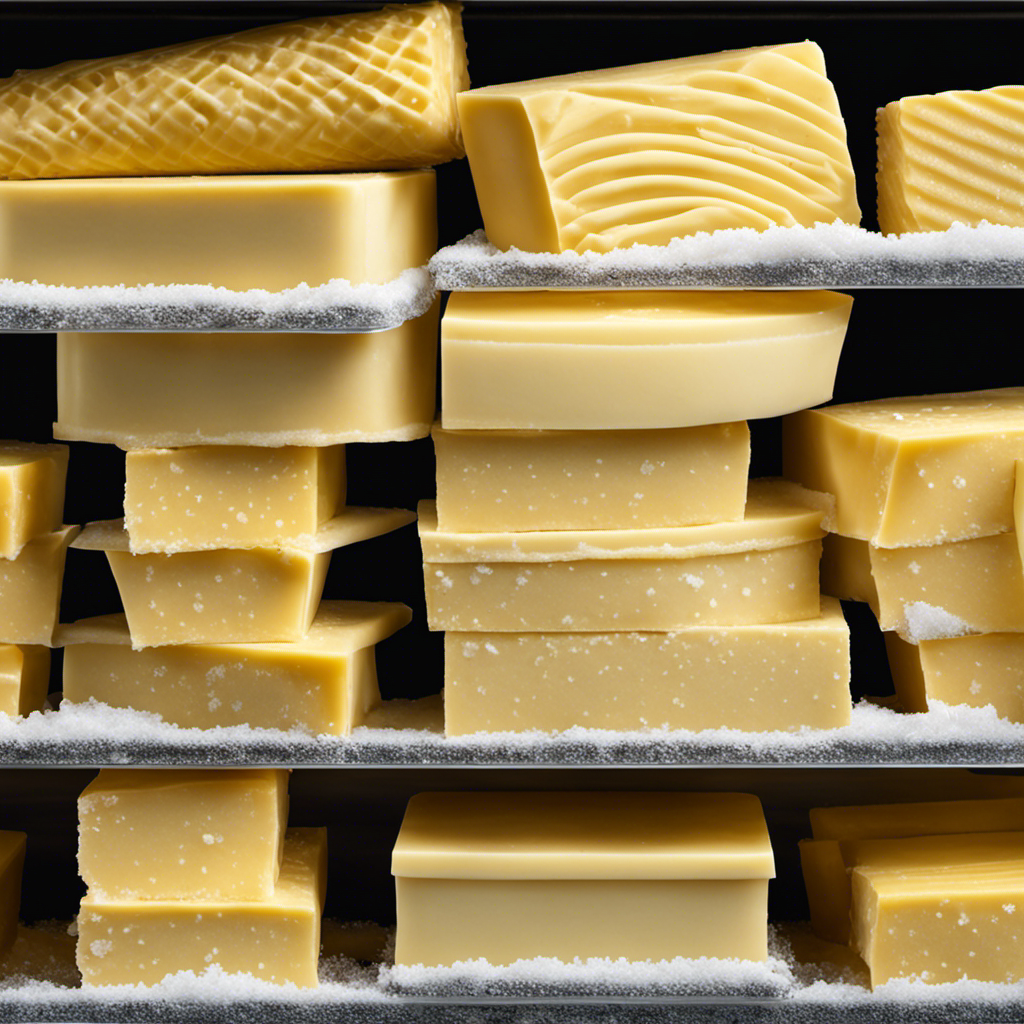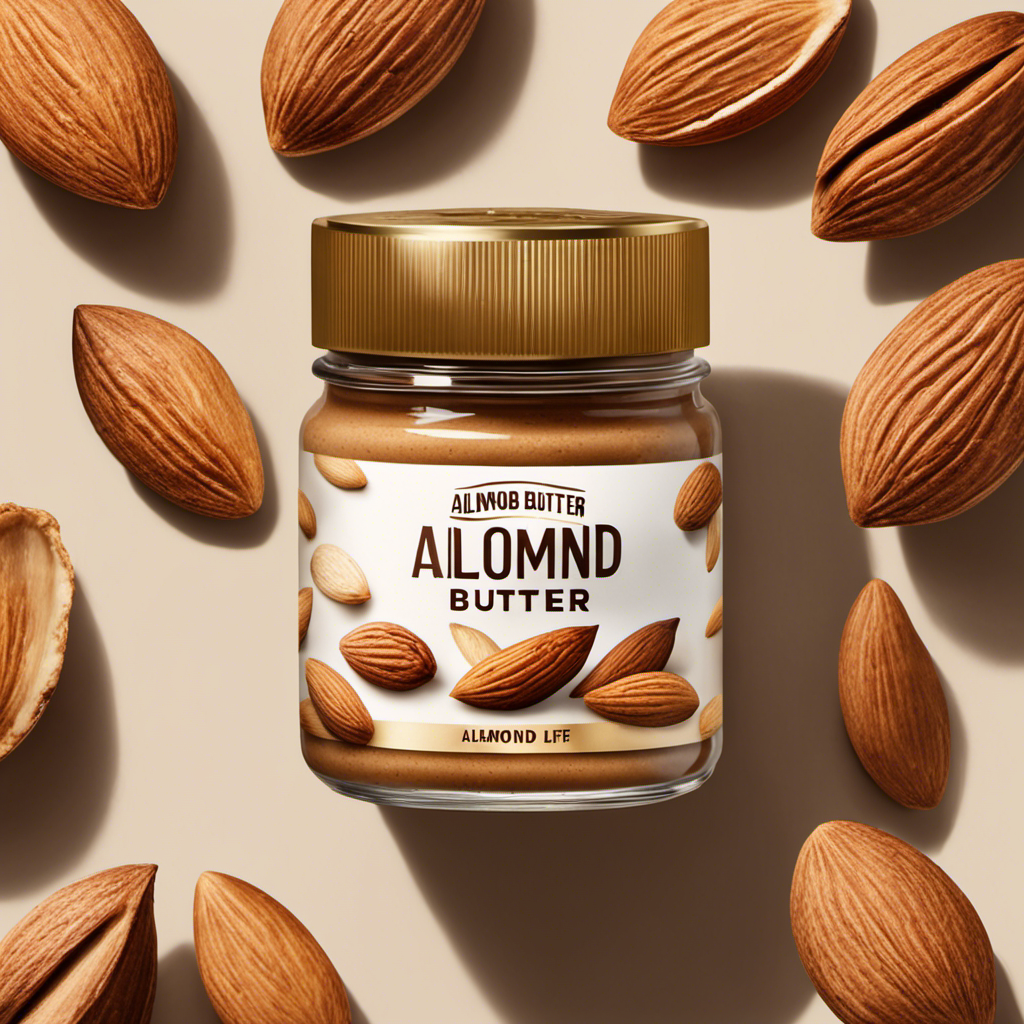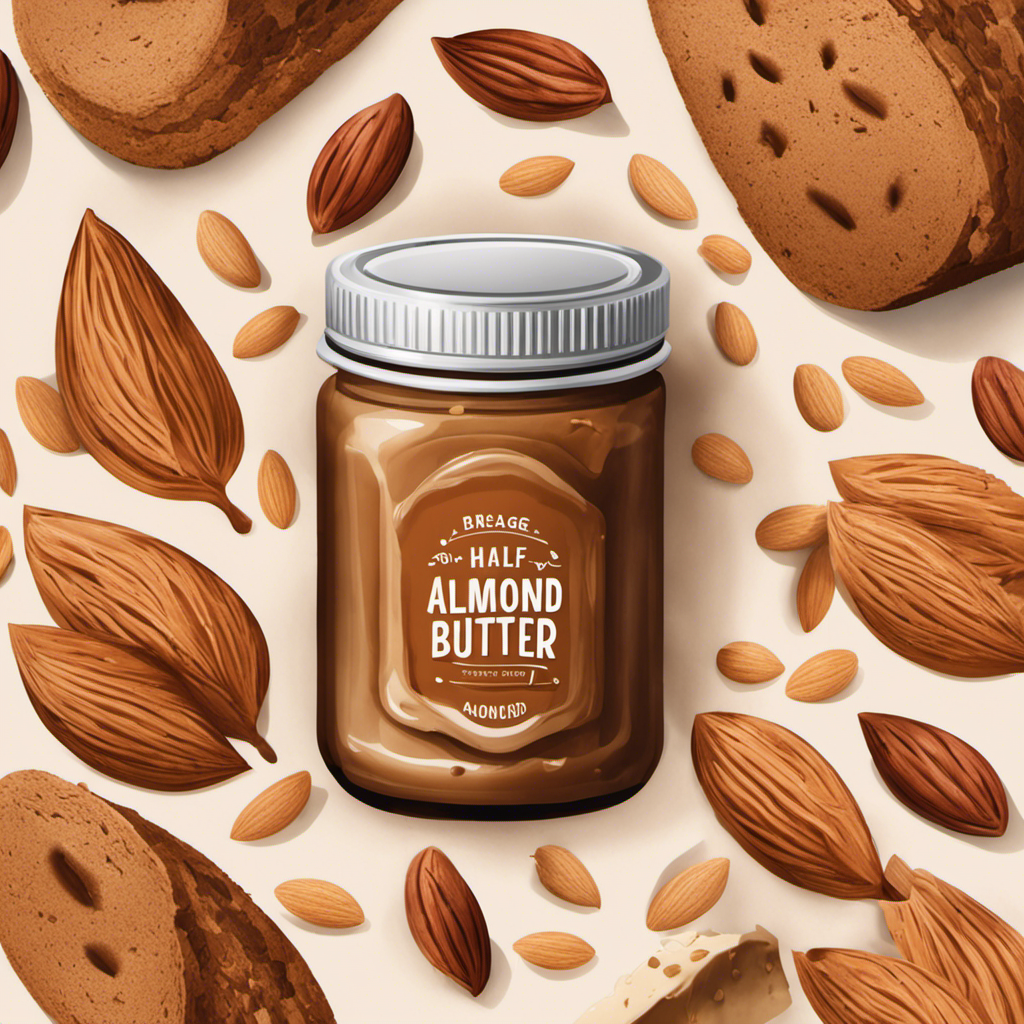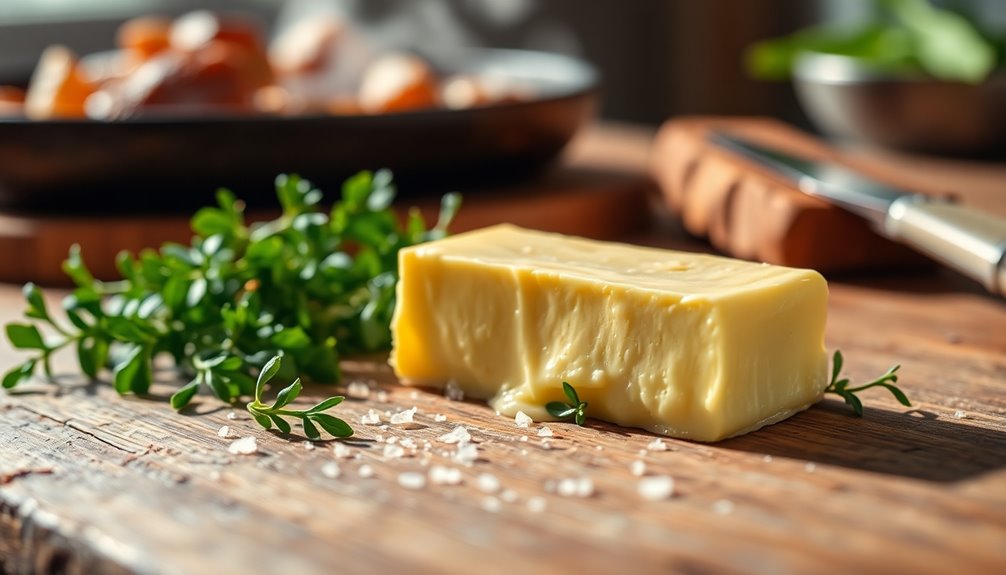As someone who really loves butter, I’ve always been curious: what is the shelf life of raw butter? This is a common question among people like me who love to bake or just enjoy butter on their morning toast.
Well, fear not, because in this article, we’ll delve into the storage guidelines, factors affecting shelf life, and proper handling of raw butter. Armed with this knowledge, you’ll be able to keep your raw butter fresh and delicious for as long as possible.
So let’s dive in and uncover the secrets of raw butter longevity!
Key Takeaways
- Store raw butter between 32°F and 40°F (0°C and 4°C) to inhibit bacterial growth
- Use airtight containers or wrap tightly in aluminum foil or parchment paper to prevent odor absorption
- Temperature, packaging, and ingredient quality affect the longevity of raw butter
- Rancid butter has a sour or unpleasant smell, a strong bitter taste, and may have a yellowish or brownish color
Storage Guidelines for Raw Butter
To ensure the freshness of your raw butter, it’s important to follow these storage guidelines.
First and foremost, the storage temperature plays a crucial role in preserving the quality and shelf life of raw butter. It is recommended to store it at a temperature between 32°F and 40°F (0°C and 4°C). This temperature range helps to inhibit the growth of bacteria and maintain the butter’s texture and flavor.
Additionally, proper packaging materials are essential for preserving raw butter. It is recommended to store it in an airtight container or wrap it tightly in aluminum foil or parchment paper. This helps to prevent the butter from absorbing odors and flavors from other foods in the refrigerator.
By following these guidelines, you can ensure that your raw butter stays fresh for a longer period of time.
Now that we have discussed the storage guidelines for raw butter, let’s move on to the next section, where we will explore the factors that can affect the shelf life of raw butter.
Factors Affecting the Shelf Life of Raw Butter
Factors like temperature, moisture, and exposure to sunlight can affect how long raw butter stays fresh. Proper preservation is key to maintaining the quality and extending the shelf life of raw butter.
When it comes to temperature, it is important to store raw butter in a cool environment, ideally between 32-40°F (0-4°C). Excessive heat can cause the butter to melt and spoil faster.
Moisture is another crucial factor to consider. Butter should be kept in an airtight container or wrapped tightly in wax paper to prevent moisture absorption and the growth of bacteria.
Additionally, exposure to sunlight should be minimized as it can lead to the breakdown of vitamins and fats in the butter, compromising its quality.
Understanding the Date of Production
When it comes to understanding the date of production and ensuring the freshness of a product, there are three key factors to consider.
Firstly, shelf life factors such as temperature, packaging, and ingredient quality all play a role in determining how long a product will remain safe and of high quality.
Secondly, storage recommendations, including proper temperature and humidity levels, can significantly impact the longevity of a product.
Lastly, labeling requirements, such as indicating the date of production and expiration, provide consumers with important information to make informed decisions about the freshness of a product.
Shelf Life Factors
The shelf life of raw butter can be affected by various factors. To ensure shelf life preservation and quality maintenance, it is important to consider the following:
-
Temperature: Raw butter should be stored in a cool place, ideally below 40°F (4°C). Exposure to heat can cause it to spoil faster.
-
Light exposure: Butter should be kept away from direct sunlight or bright artificial light. Light can accelerate the oxidation process, leading to rancidity.
-
Contamination: Proper hygiene practices should be followed when handling raw butter to prevent the introduction of bacteria or other contaminants.
-
Packaging: Using airtight containers or wrapping the butter tightly in foil or parchment paper can help prolong its shelf life by preventing exposure to air and moisture.
Storage Recommendations
To maintain the quality of your raw butter, it’s essential to follow proper storage recommendations.
The storage temperature plays a crucial role in keeping your butter fresh and safe to consume. Ideally, raw butter should be stored at a temperature of around 32 to 40 degrees Fahrenheit. This low temperature helps to slow down the growth of bacteria and prevent spoilage.
It’s important to avoid storing raw butter at higher temperatures, as it can lead to the development of rancidity and off-flavors.
When it comes to container options, it’s best to choose an airtight container that provides protection from light and air exposure. Glass or plastic containers with tight-fitting lids are commonly used for storing raw butter, ensuring its quality and preventing any unwanted odors or flavors from seeping in.
Labeling Requirements
Make sure you follow the labeling requirements for your raw butter, as they are crucial for ensuring compliance and providing important information to consumers. Here are the key regulations to keep in mind:
-
Product Name: Clearly indicate that it is ‘raw butter’ to differentiate it from other types of butter.
-
Ingredients: List all the ingredients used in your raw butter, including any additives or preservatives.
-
Net Weight: Clearly state the weight of the product on the label, so consumers know exactly how much they are getting.
-
Allergen Information: If your raw butter contains any common allergens like milk or nuts, make sure to include a warning.
Following these labeling regulations not only helps you stay in compliance with the law but also ensures that consumers have the necessary information to make informed choices about the raw butter they are purchasing.
Now, let’s discuss the signs of spoiled raw butter.
Signs of Spoiled Raw Butter
When it comes to consuming butter, it’s important to be aware of the indicators of rancidity. Rancid butter can have a sour or unpleasant smell, a strong bitter taste, and a yellowish or brownish color. These signs are evidence that the fat in the butter has oxidized and become spoiled.
To ensure safe consumption, it’s crucial to follow guidelines that recommend discarding any butter that shows these indicators of rancidity.
Rancid Butter Indicators
If your butter has a strong, unpleasant odor and a sour taste, it is a clear sign that it has gone rancid. Rancidity occurs when the fats in butter react with oxygen, causing it to spoil.
To prevent rancidity and preserve raw butter, follow these steps:
-
Store it properly: Keep raw butter in an airtight container or wrap it tightly in wax paper to minimize exposure to air.
-
Keep it cool: Store raw butter in the refrigerator, as heat can accelerate the rancidity process.
-
Avoid light: Light can also contribute to rancidity, so store your butter in a dark place or use an opaque container.
-
Use it quickly: Raw butter has a shorter shelf life compared to processed butter. Use it within a week or freeze it for longer storage.
Safe Consumption Guidelines
To ensure safe consumption, it’s important to follow these guidelines for storing and using your butter.
Proper handling precautions can help minimize health risks associated with contaminated or spoiled butter.
First and foremost, always check the expiration date on the packaging before purchasing.
Once you bring the butter home, store it in the refrigerator at a temperature below 40°F (4°C) to prevent bacterial growth.
When using butter, make sure to wash your hands thoroughly before handling it to avoid transferring any harmful bacteria.
Additionally, avoid leaving butter at room temperature for extended periods, especially in warm environments, as this can increase the risk of spoilage.
Proper Handling and Packaging of Raw Butter
Properly handling and packaging raw butter ensures its freshness and longevity. Here are some essential techniques to consider:
-
Temperature control: Keep the butter in the refrigerator at a consistent temperature of around 40°F (4°C). This helps maintain its quality and prevent spoilage.
-
Air-tight containers: Store the butter in an air-tight container to protect it from exposure to air and moisture, which can lead to rancidity and mold growth.
-
Wrapping: Use wax paper or parchment paper to wrap individual portions of butter, preventing it from absorbing odors and flavors from other foods in the fridge.
-
Freezing: If you have excess butter, consider freezing it in a freezer-safe container. This will extend its shelf life for up to six months.
Extending the Freshness of Raw Butter
When it comes to raw butter, preserving its freshness and quality is essential. To extend the freshness of raw butter, there are a few key steps to follow.
First, it is crucial to ensure that the butter is kept at a consistently low temperature, ideally below 40°F (4°C). This can be achieved by storing it in the refrigerator.
Additionally, using airtight containers or wrapping the butter tightly in aluminum foil can help prevent the absorption of odors and the loss of moisture. It is also important to avoid exposing the butter to direct sunlight or heat sources.
By following these guidelines, you can maximize the shelf life of your raw butter while preserving its taste and texture.
Now that we understand how to extend the freshness of raw butter, let’s explore how different storage environments can affect its quality.
Storing Raw Butter in Different Environments
Storing raw butter in various environments can have a significant impact on its quality and freshness. To ensure that your butter stays fresh for as long as possible, it’s important to store it properly.
Here are some tips for storing raw butter in different environments:
-
Storing raw butter in the fridge: The fridge is the best place to store raw butter if you want to extend its shelf life. Wrap the butter tightly in wax paper or plastic wrap to prevent it from picking up any odors from other foods in the fridge.
-
Storing raw butter in the pantry: If you prefer to keep your butter at room temperature, storing it in the pantry is an option. However, keep in mind that butter can spoil quickly when exposed to heat and light. To prevent this, store the butter in an airtight container away from direct sunlight.
Frequently Asked Questions
Can Raw Butter Be Frozen to Extend Its Shelf Life?
Yes, raw butter can be frozen to extend its shelf life. Freezing helps to preserve the butter’s freshness and prevent spoilage. It is one of the alternative methods to extend raw butter’s shelf life.
How Can I Tell if Raw Butter Has Gone Bad Without Opening the Package?
I once bought raw butter that had gone bad without realizing it. It smelled off and had a strange taste. Trust your senses – if it smells or tastes off, or if there are visual indicators like mold, it’s time to throw it out.
Is It Safe to Consume Raw Butter Past Its Expiration Date?
Consuming raw butter past its expiration date is not recommended for safety reasons. However, if the butter is still within its expiration date, it can provide health benefits like vitamins and healthy fats. Expired raw butter can be used for alternative purposes like making homemade lotions or soaps.
Can Raw Butter Be Stored in the Refrigerator Door or Should It Be Kept on the Main Shelf?
I store my raw butter on the main shelf of the refrigerator to ensure it stays at a consistent temperature. The refrigerator door may not maintain the optimal temperature, and alternative storage methods could affect its freshness.
Are There Any Specific Containers or Packaging Materials That Are Recommended for Storing Raw Butter?
Recommended storage containers for raw butter include airtight glass jars or containers made of food-grade plastic. To properly wrap raw butter, use parchment paper or wax paper to create a tight seal.
Conclusion
In conclusion, it is important to properly store raw butter in order to extend its shelf life and maintain its freshness. By following the recommended storage guidelines, understanding the date of production, and being aware of the signs of spoilage, you can ensure that your raw butter remains safe to consume.
Just like a delicate flower that wilts without proper care, raw butter can spoil if not handled and stored correctly. So, treat it with the care it deserves and savor its creamy goodness for as long as possible.
